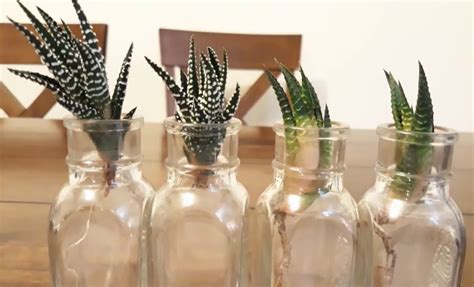Expert Tips for Haworthia Watering Success
Haworthias, those charming succulent stars with their captivating textures and patterns, are a popular choice for plant enthusiasts. But their unique water requirements often leave even seasoned gardeners scratching their heads. Overwatering is a common culprit for Haworthia demise, leading to root rot and ultimately, a sad, shriveled plant. This comprehensive guide will equip you with expert tips to master the art of Haworthia watering, ensuring your collection thrives for years to come.
Understanding Haworthia's Water Needs: The Foundation of Success
Before diving into watering techniques, it's crucial to understand the fundamental needs of Haworthias. These small succulents are adapted to arid and semi-arid environments, meaning they're designed to store water within their thick leaves. This is why infrequent, deep watering is far more effective than frequent, shallow watering. Overwatering leads to soggy soil, suffocating the roots and creating the perfect environment for fungal diseases.
How Often Should I Water My Haworthia?
This is the million-dollar question, and unfortunately, there isn't a one-size-fits-all answer. The frequency depends on several factors:
- Season: Water less frequently in winter (dormant period) and more often during spring and summer (growing season).
- Potting Mix: A well-draining succulent potting mix is crucial. A mix that retains too much moisture will lead to problems, regardless of watering frequency.
- Pot Size and Material: Smaller pots dry out faster than larger ones. Terracotta pots are more porous than plastic, allowing for faster evaporation.
- Environment: Hot, dry conditions will require more frequent watering than cool, humid environments.
A good rule of thumb is to water thoroughly when the soil is completely dry. Stick your finger a couple of inches into the soil; if it feels dry, it's time to water. Avoid watering on a schedule; instead, check the soil moisture regularly.
How to Water Your Haworthia Properly: Techniques for Success
Proper watering technique is just as important as frequency. Here’s how to do it right:
- Water Thoroughly: When you do water, water deeply until water drains out of the drainage holes. This ensures the entire root system is hydrated.
- Avoid Overhead Watering: Overhead watering can lead to fungal diseases and rot. Water directly at the base of the plant, avoiding wetting the leaves.
- Allow Excess Water to Drain Completely: Do not allow your Haworthia to sit in standing water. This will suffocate the roots. Ensure the pot has adequate drainage holes.
- Use Room Temperature Water: Avoid using cold water, as this can shock the plant's roots.
Signs Your Haworthia Needs Water (and Doesn't)
Knowing the signs of underwatering and overwatering is critical for maintaining a healthy plant.
Signs of Underwatered Haworthia:
- Shriveled leaves: The leaves will appear wrinkled and soft.
- Leaf discoloration: Leaves may appear dull or slightly faded.
- Soil is completely dry: This is the most obvious sign.
Signs of Overwatered Haworthia:
- Soft, mushy leaves: The leaves will feel spongy or slimy.
- Yellowing or browning leaves: This indicates root rot.
- Fungal growth: You may see mold or mildew on the soil surface.
What Kind of Water Should I Use?
While tap water is generally acceptable, using filtered or rainwater is preferable, especially if your tap water is hard or contains high levels of minerals. These minerals can build up in the soil over time, potentially harming your plant.
Dealing with Common Watering Problems
Q: My Haworthia leaves are mushy and rotting. What should I do?
A: This is a classic sign of overwatering. Remove the plant from the pot, carefully inspect the roots, and trim away any mushy or rotten sections. Repot the plant in fresh, well-draining soil. Reduce watering frequency significantly until the plant shows signs of recovery.
Q: My Haworthia leaves are shriveled and wrinkled. Is it dying?
A: This indicates underwatering. Water the plant thoroughly and monitor it closely. It should plump up within a few days. If not, carefully check the roots for any damage.
Q: How often should I water my Haworthia in winter?
A: During winter dormancy, Haworthias need significantly less water. Water only sparingly, perhaps once a month or even less, depending on your environment. Allow the soil to dry out completely between waterings.
Q: What is the best type of soil for my Haworthia?
A: A well-draining succulent and cacti potting mix is ideal. You can also amend regular potting soil with perlite or pumice to improve drainage.
By following these expert tips and paying close attention to your Haworthia's signals, you can ensure its continued health and beauty. Remember, patience and observation are key to Haworthia watering success.

